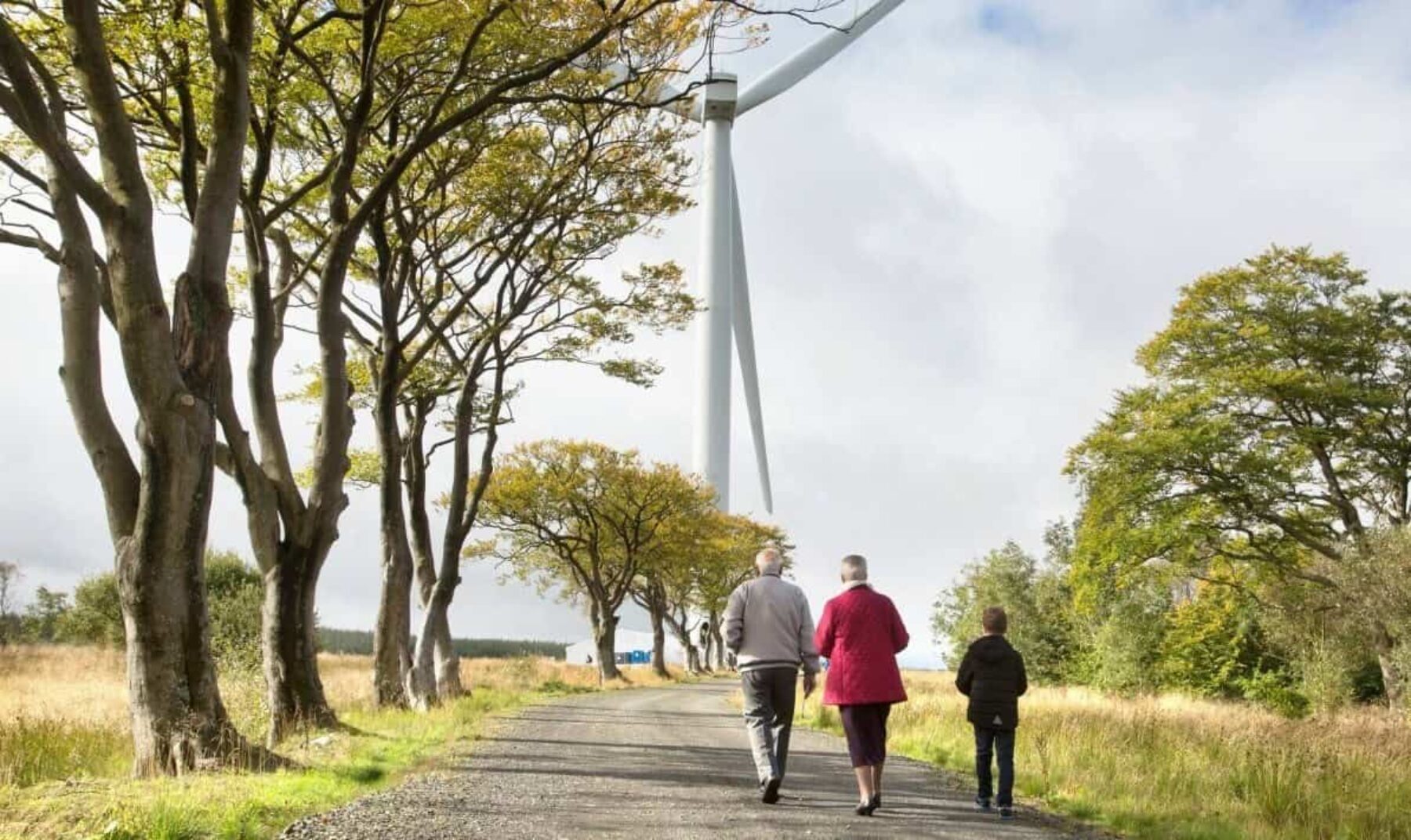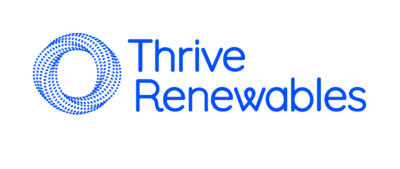Community-funded energy projects put power in the hands of the people and are helping transform the UK energy market. Thrive Renewables empowers individuals to invest in the green energy sector – here are five of its flagship projects
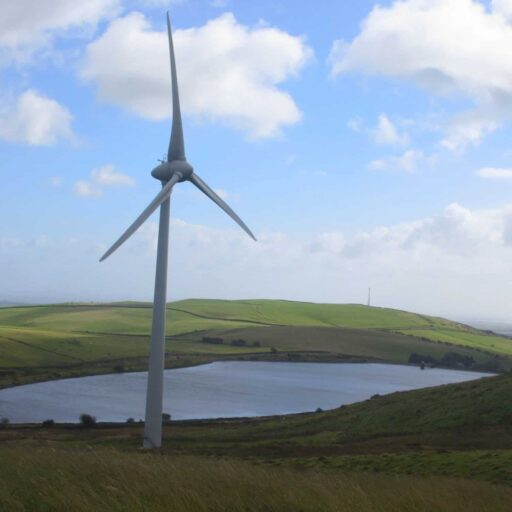
A testament to the power of the collective, Mean Moor wind farm was a private enterprise until a Cumbrian community bought it out in 2017. The site is owned by three co-operatives – High Winds, Baywind Energy and Energy Prospects – which took out a loan from Thrive Renewables to buy the farm (part of this was paid back within a fortnight after locals raised an impressive £2.8m). Mean Moor highlights how the community sector can operate in the business world and demonstrates the growing appetite for community-owned energy projects in the UK.
Homes powered: 4,500*
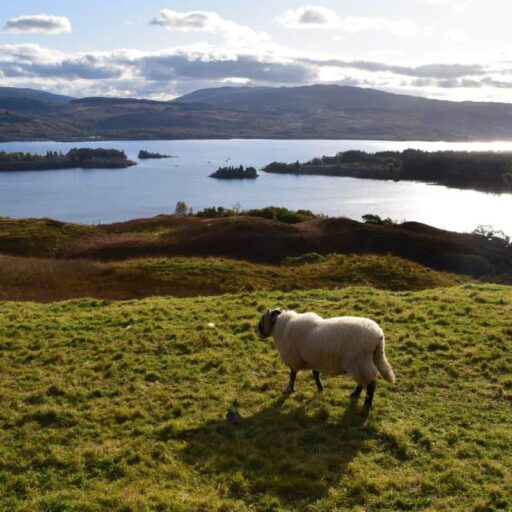
Whirring away on the edge of Loch Awe, Beochlich is a hydro-electric project that takes advantage of something the west coast of Scotland has a lot of: rain. Running off the hills and into the loch (pictured), the country’s bountiful drizzle helps drive two turbines. Nearby, the Bridge of Orchy Community Hall tackles social isolation by organising activities for parents, children and older people. The hall recently received funding via Thrive’s Community Benefit Programme, which provides local community buildings with advice and grants to implement energy-saving measures and make them more comfortable places to be.
Homes powered: 1,000*
Image credit: Damien Ramage
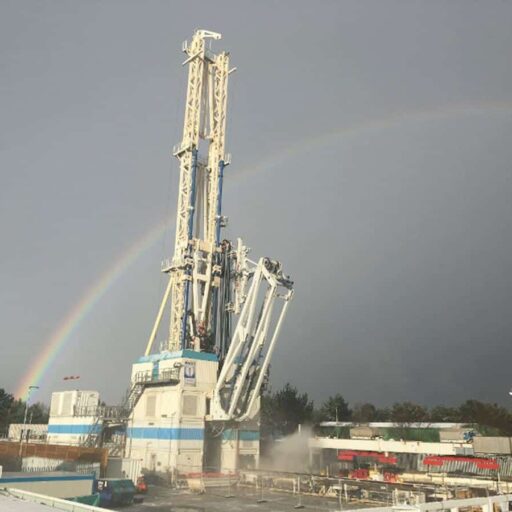
Set to go live next year, United Downs will be the UK’s first geothermal power plant. The site lays claim to the country’s deepest onshore well, which disappears 5.1km below ground; heat from such wells will drive turbines, powering generators that will provide clean electricity 24/7. Thrive Renewables announced in February that it would invest up to £6.5m in the plant, which is being built by Geothermal Engineering. “This pioneering project taps a constant natural resource, providing baseload renewable electricity, a crucial component of the UK’s clean energy generation mix,” said Matthew Clayton, MD of Thrive Renewables.
Homes powered: 6,500*
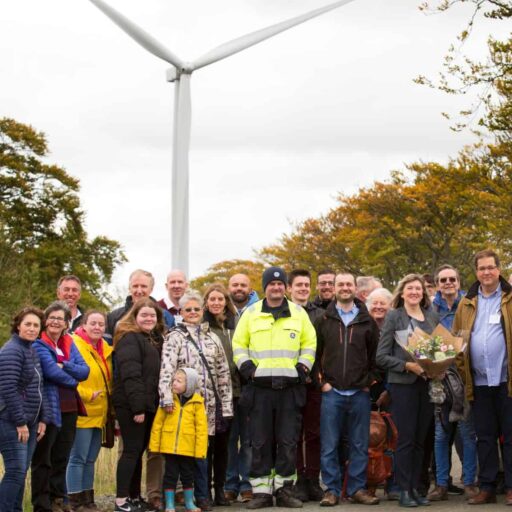
Located on an old opencast coal mine near Edinburgh, Drumduff wind farm is symbolic of our shift from fossil fuels to renewables. The facility boasts three towering turbines, which can generate enough electricity to power around 5,500 homes. The 47-hectare site is in the process of rewilding itself; slowly the scars of the extraction industry are beginning to heal. The project, which is co-owned with Scottish renewable energy developer GreenPower, also includes an area of woodland that is managed alongside the wind farm.
Homes powered: 5,500*

Chances are you’ve enjoyed a spud that passed through Greenvale AP’s processing plant, which sorts 12,000 tonnes of potatoes each month. That requires a lot of energy, much of which comes from a wind turbine on site that feeds electricity directly to the Cambridgeshire factory. Built by Thrive Renewables, the small-scale green energy project not only makes Britain’s beloved potatoes more sustainable, but also makes Greenvale AP less vulnerable to fluctuations in the energy market. Also taking advantage of the blustery Cambridgeshire fens are the nearby Boardinghouse and Ransonmoor wind farms, in which Thrive has also invested.
Homes powered: 1,126*
Timeline: The switch to cleaner energy
When Thrive Renewables launched in 1994 – then as the Wind Fund – just 2 per cent of the UK’s electricity came from wind and solar. Last year green energy overtook fossil fuels as the dominant source of electricity. This timeline charts the big milestones and Thrives role in reaching them
1994
- Triodos Bank sets up the Wind Fund to invest in small-scale renewable energy projects. The Wind Fund later becomes Thrive Renewables, an independent company
- Renewables provide 2 per cent of the UK’s electricity
1995
- Thrive issues its first share issue to fund a wind farm in Cumbria, a joint venture with community investors
1998
- The company’s first renewable energy project, Haverigg II wind farm in Cumbria, goes live
2006
- Investment in Caton Moor wind farm, Lancashire, increases Thrive’s capacity from 6MW to 23MW
- Renewables provide 5 per cent of the UK’s electricity
2010
- Around 10 per cent of UK’s electricity comes from renewables
2013
- Thrive invests in four new projects, increasing its capacity to 53MW
- The Energy Act commits the UK to decarbonising its electricity market
2016
- The Paris Agreement is signed by 195 nations
- Thrive raises £10m for renewable energy investment
2019
- Thrive celebrates 25 years, having invested in 22 wind, solar and hydro projects and generated enough power in total to meet the needs of 1m UK residents**
- The UK becomes the first major economy to commit to net zero CO2 emissions by 2050
- In October, renewables generate more electricity than fossil fuels for the first time
* One home = 3.78MWh (Source: Department for Business, Energy and Industrial Strategy (BEIS))
** Cumulative since 1998; One home = 3.78MWh p.a.; 2.3 residents per home (Source: BEIS; ONS)
